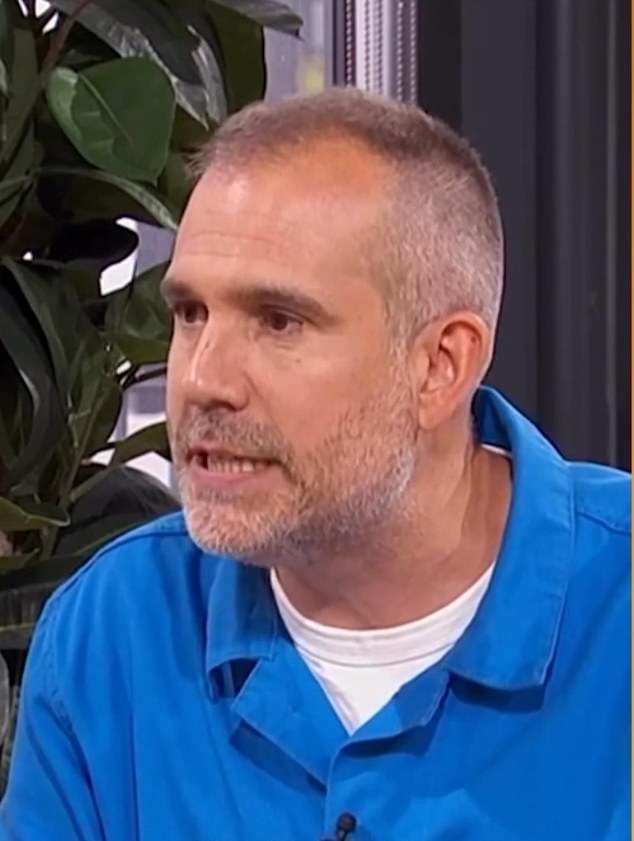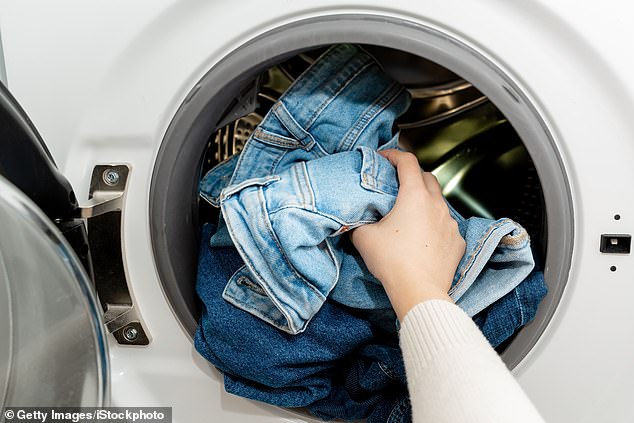If you think cleaning your clothes is as simple as bunging them in the washing machine, you’re mistaken—and you might not be killing bacteria lurking in the fibres.
Dr Chris van Tulleken, 46, was a guest on BBC Morning Live when he warned that some people are likely wearing clothes which are crawling with microscopic nasties.
He explained that temperature is key when it comes to eliminating germs, but hotter isn’t always better when it comes to our wardrobes.
Dr van Tulleken—who is best known for his hard stance on modern diets and penned a best selling book called Ultra Processed People—said that even though a standard washing machine can reach temperatures of 90 degrees, it’s not suitable for most loads, and pushes up energy bills.
‘That [temperature] will kill everything. It’s almost boiling it. It’s bad for the clothes,’ he said.
He added that if people think their clothes are so grimy that they need a super hot wash, ‘you gotta get new clothes at that point’.
Dr van Tulleken then explained that if you or a family member has been unwell, a wash at 60 degrees is needed to kill the germs responsible, echoing the official advice shared by the World Health Organisation.
He said: ‘Certain bugs will be killed, and that can be quite good.

Dr Chris van Tulleken warned BBC Morning Live viewers their clothes might not be truly clean

He explained that certain temperatures are needed to kill off bacteria and germs
‘So if you’ve got an infection going around your house, particularly, think of something like norovirus.
‘Put it up at 60 along with the mechanical cleaning and the detergent, that’s quite good.’
But when it comes to every day laundry, he scoffs at the notion of setting the machine to 40 degrees, saying that it’s a lukewarm no man’s land which ends up costing you more money.
He said: ‘Personally, I don’t see the point in 40 degrees, because it’s it’s too hot to be cheap, and it’s too cold to kill anything.
‘Commit to one or the other. Either go hot or go cold. 30 degrees, that gets the job done. It is much cheaper.
‘Going from 40 to 30 saves you almost 40 per cent in energy costs. It’s quicker.’
Dr van Tulleken then said that he personally opts for an even lower temperature—a relatively chilly 20 degrees—unless he’s cleaning his gym kit.
He said: ‘I’ve got to say I’m a I’m a 20 degrees guy for everything except my workout clothes, which go in hotter…it saves 62 per cent of your money compared to 40 degrees. So that is a big deal.’
However, he was keen to stress that he uses a detergent designed for use at lower temperatures, and is also very strict about the hygiene of his washing machine, which is something many people overlook.
He said: ‘You’ve got to think about cleaning your machines.
‘The detergent tray, where all the mould grows, can be a real nuisance to clean.
‘I put it in the dishwasher and then mechanical cleaning of the drum, just a cloth, some vinegar wiping is really good.
‘And if your machine has a cleaning cycle which runs it at a high temperature, do that according to the manufacturer’s instructions, and then air it out.’
A good rule of thumb for cleaning your washing machine is to empty the filter every three to six months, clean the detergent drawer monthly, clean the rubber door seal every week, and leave the door open when it isn’t in use.
A dirty washing machine can cause clothes to take on an unpleasant mildew smell, especially if damp clothes are left in the drum for long periods of time.












